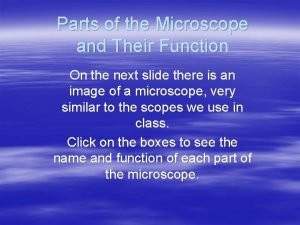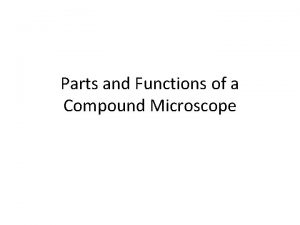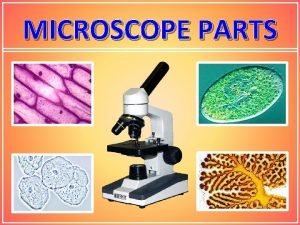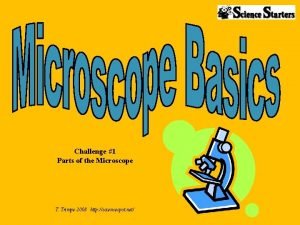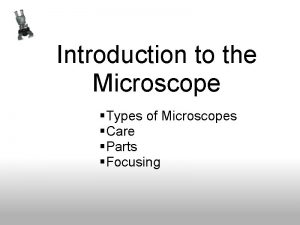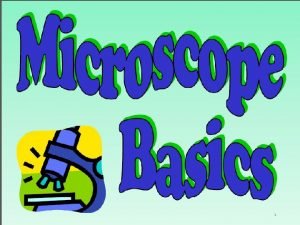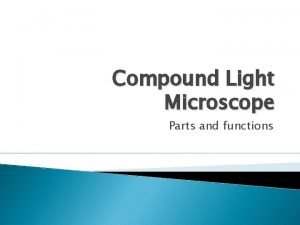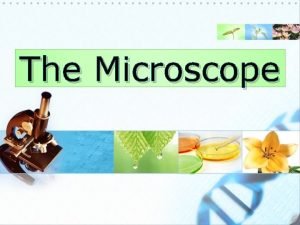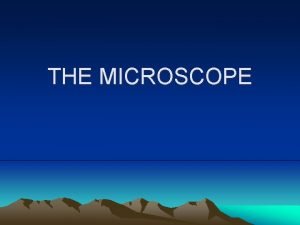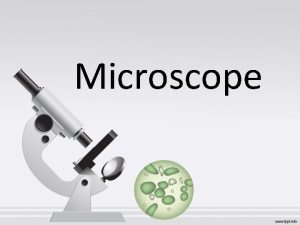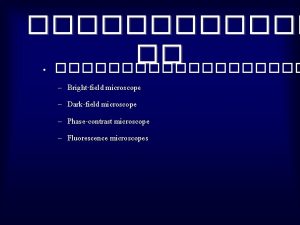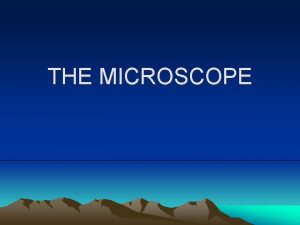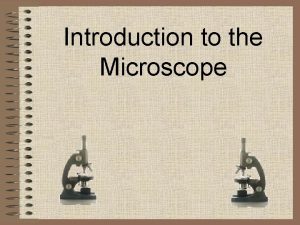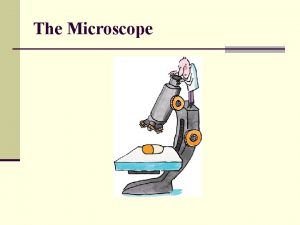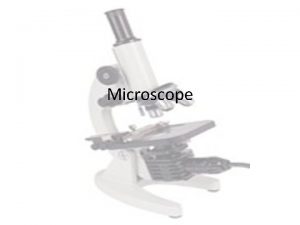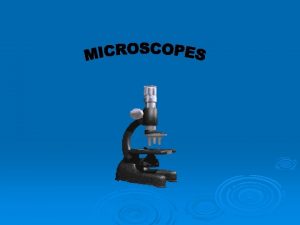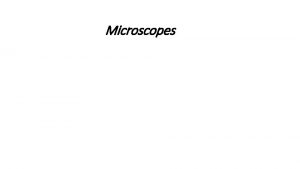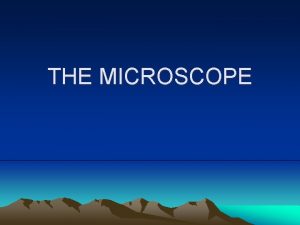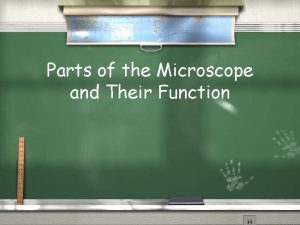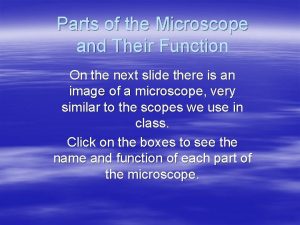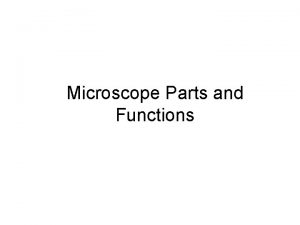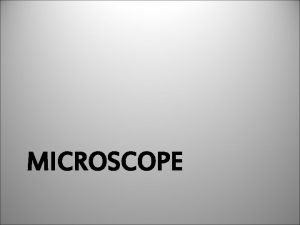Parts of the Microscope and Their Function NOTE


















- Slides: 18

Parts of the Microscope and Their Function NOTE: The actual microscope on the quiz is in your 8 pocket folder. You only need to know the parts on that paper (this Power. Point has a few extra parts.

§ The term with the * is the on the quiz (they have multiple names): § * aperture control (also called diaphragm) § * arm (also called neck) § * focus control is the same thing as adjustment knob (also called coarse adjustment) § nosepiece (also called rotating objectives)

Click on Me Click on Me Click on Me Click on Me

#9 Eye Piece—The part you look at with your eye. Usually 10 X magnification. Click Here to Return to the Main Slide

#10 Neck – Used to safely transport microscope Click Here to Return to the Main Slide

#11 Stage – Slides are placed on this Click Here to Return to the Main Slide

#12 Coarse Adjustment – Used to make large changes in focus. NOTE Never use this when viewing on high power Click Here to Return to the Main Slide

#13 Fine Adjustment – Used to small adjustments of focus Click Here to Return to the Main Slide

#14 Base – Used to safely transport the microscope Click Here to Return to the Main Slide

#1 Tube – Reflects light up to the viewers eye Click Here to Return to the Main Slide

#2 Rotating Objects – Allows for quick change of objectives Click Here to Return to the Main Slide

#3 Low Power Objective – The first lens you use when doing proper microscope work. Usually 4 X Click Here to Return to the Main Slide

#4 Medium Power Objective – The second lens you use when doing proper microscope work. Usually 10 X Click Here to Return to the Main Slide

#5 High Power Objective – The highest magnification used. Usually 43 X. NEVER use the course adjustment when using this lens. Click Here to Return to the Main Slide

#6 Stage Clips – Use to keep the slide in place. Click Here to Return to the Main Slide

#7 Diaphragm – Use to vary the amount of light passing through the slide. Usually it is better if the amount of light is low. Click Here to Return to the Main Slide

#8 Light Source – Sends light up through the diaphragm and through the slide for viewing Click Here to Return to the Main Slide

Lets take a look! http: //www. udel. edu/biology/ketcham/microscope/ Microscope quiz: http: //www. mesacc. edu/~johnson/labtools/Dmicrosco pe/quiz 8. html Matching Activity: http: //www. quia. com/mc/509402. html http: //school. discoveryeducation. com/lessonplans/inte ract/vemwindow. html
 Parts of the microscope and its function
Parts of the microscope and its function Microscope parts and uses
Microscope parts and uses Parts of compound light microscope
Parts of compound light microscope Light microscope vs electron microscope
Light microscope vs electron microscope Difference between note making and note taking
Difference between note making and note taking Signal words examples
Signal words examples Difference between note making and note taking
Difference between note making and note taking Debit note and credit note
Debit note and credit note How to write debit note
How to write debit note Note taking and note making
Note taking and note making Parts of plant
Parts of plant Plants objectives
Plants objectives Microscope mania compound light microscope
Microscope mania compound light microscope Financial documents in order
Financial documents in order Simple discount note
Simple discount note Types of microscope
Types of microscope Monocular microscope parts
Monocular microscope parts Microscope labeled parts and functions
Microscope labeled parts and functions The compound light microscope parts and functions
The compound light microscope parts and functions
